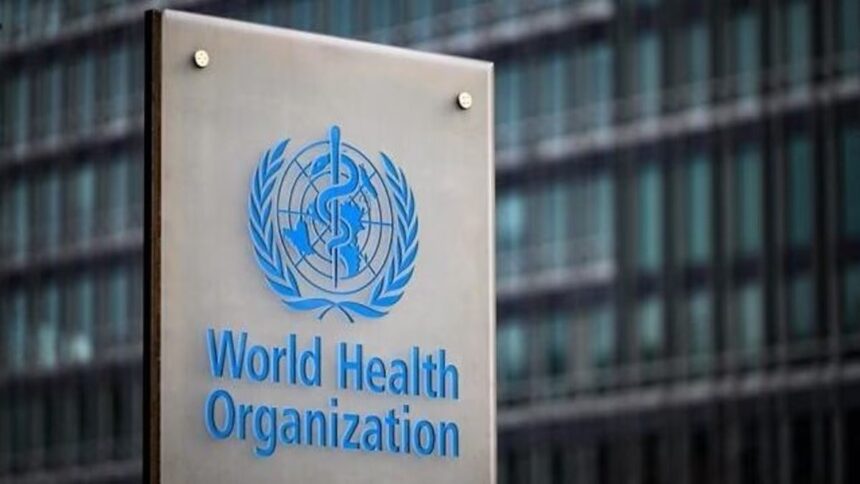The World Health Organization (WHO) has asked countries to monitor the simultaneous spread of influenza and SARS-CoV-2 viruses through integrated surveillance. The apex global health body said countries should report findings to RespiMART (FluNet and FluID), a global web-based tool for tracking influenza viruses, either directly or through regional platforms.
According to the WHO, clinicians should include influenza in their diagnostic considerations, particularly for high-risk groups, and adhere to national and WHO guidelines for testing and treatment. “In Southeast Asia, there has been sustained elevated influenza activity, with ongoing reports of primarily A (H1N1) pdm09 and A (H3N2) virus detections,” the WHO said in a report.
The development assumes significance for India, which is experiencing an influenza outbreak. As of May 31, there have been at least 1,995 cases of H1N1 and 26 deaths caused due to the infection, according to data from the National Centre for Disease Control (NCDC).
The WHO has expressed concerns about inadequate surveillance of coronaviruses and the emergence of new variants. Globally, SARS-CoV-2 positivity from sentinel surveillance has dropped below 10 per cent.
Positivity rates rose above 20 per cent in Europe and slightly above 10 per cent in the Americas. Positivity remained under 10per cent in other regions, with decreases observed in the Southeast Asia Region and the Region of the Western Pacific. SARS-CoV-2 positivity from non-sentinel surveillance was just below 10 per cent globally, as stated by the WHO.
The WHO reports show EG.5 (Eris) has been reported in over 50 countries, and variant BA.2.86 (Pirola) is present in four countries. The WHO is actively monitoring several SARS-CoV-2 variants, including three Variants of Interest (VOIs): XBB.1.5, XBB.1.16, and EG.5. Additionally, there are seven Variants Under Monitoring (VUMs) and their respective descent lineages: BA.2.75, BA.2.86, CH.1.1, XBB, XBB.1.9.1, XBB.1.9.2, and XBB.2.3.
On August 17, WHO designated a new SARS-CoV-2 variant, scientifically named BA.2.86 (Pangolineage designation), as a VUM due to its extensive spike gene mutations (over 30). Presently, there are only four known sequences of this variant, reported from two European Region countries and one from the Region of the Americas. These cases have no known associated epidemiological connections. The potential impact of the BA.2.86 mutations is presently unknown and is undergoing careful assessment.
The WHO said that it is important to enhance surveillance, sequencing, and reporting of COVID-19 as the virus continues to circulate and evolve. XBB.1.16 and EG.5 are the most prevalent VOIs reported globally since emerging from 101 and 50 countries, respectively.
Doctors are also reporting an increase of the influenza patients.
“An elevated number of patients are presenting with respiratory ailments marked by symptoms like fever, cough, and breathlessness. Many of these cases are being seen in the outpatient department (OPD) and are testing positive for influenza A and H3N2. A smaller proportion has tested positive for H1N1, while a subset of patients has exhibited severe symptoms leading to hospitalisation,” said Dr Vikas Maurya, Director and HOD, Pulmonology, Fortis Hospital, Shalimar Bagh.
“We adhere to a protocol that involves conducting influenza A and COVID testing for all individuals presenting with influenza-like symptoms, whether in the OPD or in hospital wards. Immediate antiviral treatment is initiated upon arrival, taking into account pending viral reports. If a patient’s viral report is negative, antiviral treatment, specifically Oseltamivir, is discontinued. Notably, no patients have tested positive for COVID so far,” he said.
However, positive cases of Influenza A continue to be identified amidst this rise in respiratory illnesses. Some patients necessitate ICU admission for enhanced antibacterial treatment and supportive care, doctor say.
“Vigilant surveillance is ongoing for patients with influenza-like symptoms, with particular attention to those with underlying health conditions. Additionally, we extend testing to patients admitted to other specialties, and any individuals with atypical symptoms are considered for both Influenza and COVID testing,” said Dr Maurya.
Amidst recent reports of new SARS-CoV-2 variants detected worldwide, Dr. P.K. Mishra, Principal Secretary to Prime Minister Narendra Modi, chaired a high-level meeting this week to review the global and national COVID-19 situation, including the impact of emerging variants like BA.2.86 (Pirola) and EG.5 (Eris).
“While India constitutes almost 17 per cent of the global population, it reported around 223 COVID-19 cases (0.075per cent of global new cases) in the past week. The country’s daily average of new COVID-19 cases remains under 50, and it has maintained a weekly test positivity rate of under 0.2per cent,” Mishra said.
Over the past 28 days (from July 17 to August 13), more than 1.4 million new Covid-19 cases and over 2,300 deaths were reported across WHO’s six regions. This marks a 63per cent increase in cases and a 56 per cent decrease in deaths compared to the previous 28 days. As of August 13, there have been over 769 million confirmed Covid-19 cases and more than 6.9 million deaths reported globally.








